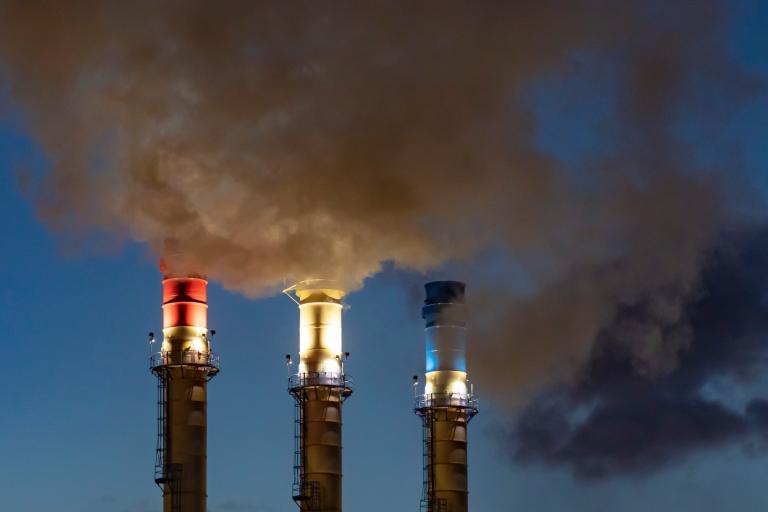In one extreme: North America’s tallest peak, Mount Denali, looms in all its 20,310 feet of snow-crusted glory. In another: Death Valley’s cracked earth and salt flats sit as low as 282 feet below sea level. Our national parks protect some of the most unique and extreme places in the country.
Climate change threatens to make these places unrecognizable.
National parks are seeing faster temperature increases than the rest of the country. A study from last year found that between 1895 and 2010, national parks warmed a little more than 1 degree C — about double the temperature increase the rest of the U.S. experienced.
As the National Park Service scrambles to mitigate these effects, they are also constantly threatened with federal budget cuts and a staggering $11.6 billion infrastructure backlog, not to mention the 34-day government shutdown which might take years for the NPS to recuperate from.
All in all, our national parks deserve some serious respect. And, it’s National Park Week, so let’s look at how climate change is our impacting our beloved national parks — and how the NPS is fighting back.
- Water playing hard to get. Hawaiian national parks are seeing more frequent tropical storms but an overall decline in precipitation. Meanwhile, national parks in the Southwest are seeing intensified droughts and changes to the climate composition. Last year, Death Valley recorded rainfall when the temperature was 119 degrees F. Even parks that aren’t as characteristically arid are seeing the effects of drought. Young giant sequoias, the iconic tree in California’s King’s Canyon, rely on regular rains to develop sturdy roots which support the trees for thousands of years. If warm, drier years continue, the older trees may succumb to disease or pests without hope of replacement.
- Disappearing glaciers. Glacier National Park is soon to be Glacier-less National Park, possibly as soon as 2030. Since 1910, the park has lost nearly three-fourths of its active glaciers. Although Glacier has seen perhaps the most drastic loss, many of the more northern national parks also have glaciers that are all seeing serious glacial retreats. Think Glacier Bay National Park, Denali, Yosemite, Kenai Fjords, Mount Rainier, and more.
- Fire in the mountain. Last year, Yosemite and Glacier both saw wildfires sweep across the parks. California’s Ferguson Fire, which burned almost 100,000 acres over a month, caused Yosemite to temporarily close –the first time since 1990. Montana’s Howe Ridge Fire, which “only” destroyed a little over 14,000 acres, was caused by lightning strikes at the same time temperatures in the park reached 100 degrees F for the first time in recorded history. Many of the parks are experiencing longer drought seasons and warmer weather, making wildfires more likely to start burning and harder to put out. In 2017, the U.S. Forest Service spent over $3 billion on fire-suppression management.
- Changing climes. National parks have long served as a haven for plants and animals, but now, climate change is causing mass migrations. Vegetation is shifting distribution, with many alpine plants moving up in elevation to find cool relief from warming temperatures. However, long-living plants are limited by their slower life cycles, and plants like the Joshua tree have nowhere to go. Literally. Joshua trees are predicted to lose up to 90 percent of their range by the end of the century. One potential solution for smaller, more portable species is assisted migration: the manual relocation of animals or plants to habitats that might be a better fit for the species’ requirements. Bull trout in Glacier National Park successfully underwent assisted migration to a higher-elevation lake where the water was cooler and there were no invasive fish with which to compete. However, it’s easier to move fish than giant sequoias.
- Invasive explosion. While many plants and animals are losing ground, pesky invasive species are capitalizing on climate change and expanding their territory. Yosemite has lost great swaths of forest to bark beetles, which the trees can usually defend against by producing beetle-trapping pitch. During times of drought, however, trees’ water reserves are too low to effectively fight back. Beetles are far from the only problem. The NPS estimates that 1.4 million acres of its land are inhabited by exotic invasive plants.
- Holocene extinction. Who better to be the poster child of extinction in national parks than the humble, yet adorable pika? Pikas are round-eared rabbit cousins native to mountainous regions including the Great Basin and southern Utah. NPS launched the project, Pikas in Peril, to help bring awareness to the impending extinction of plants and animals in parks. Small mammals like the pika are especially vulnerable to climate change-induced extinction because they inhabit cooler, high altitude areas which are seeing warming at unprecedented rates. Hawaii’s parks, by far, have the most to lose in terms of U.S. biodiversity. A whopping 44 percent of the nation’s endangered plant species are endemic to Hawaii, and around 100 species have already gone extinct.
So … is all lost? Not quite. National parks are indeed suffering from climate change, but there are still reasons to remain hopeful. Despite the current presidential administration’s lack of emphasis on climate change, including President Trump’s continuous denial of its existence and the proposed $500 million cut to the NPS in the 2020 budget, federal land management programs are continuing to work on climate, albeit in the shadows.
Many state and local officials in the NPS, U.S. Forest Service, Bureau of Land Management, and U.S. Fish and Wildlife Service are continuing to train employees on climate mitigation, collecting data, and collaborating with other organizations.
“A lot of the work that the agencies do is inherently related to and affected by climate change,” Joel Clement, the DOI’s director of policy, told Bloomberg Environment. “You don’t necessarily need to be saying the words ‘climate change’ to work on it. That’s what a lot of the staff are doing now.”
Do it for the pikas, NPS.




